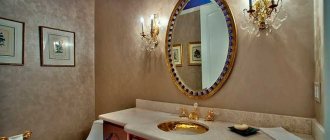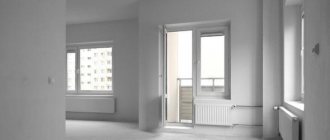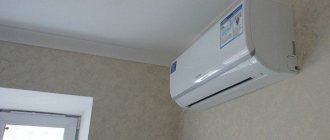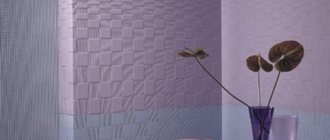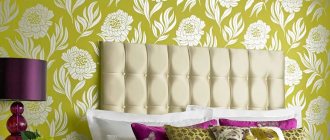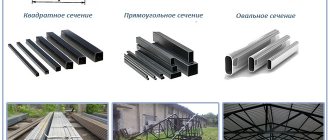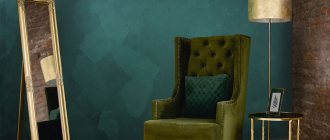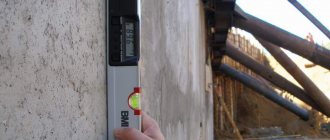For many, wallpapering is the best option for renovating a room. To obtain a decent result, it is necessary to carry out the process correctly. The appearance of the material will look more attractive if there are no seam zones or other flaws. Therefore, direct joining of wallpaper is often chosen, which requires care and skill from the master. The article will describe in detail the direct joining of wallpaper, what it means, and how to do it.
What it is
There are different types of wallpaper, for this reason the material remains in demand for a long period. You can glue wallpaper with your own hands, which significantly saves the family budget, but to get a high-quality result you need to know how to properly join wallpaper.
Usually the best option is to join the panels end-to-end, joining pattern 64, what does this mean, many beginners ask. We are talking about working with the popular wallpaper width of 64 centimeters, or the step of the pattern through this distance. This is a standard size and most often you have to work with this type of canvas.
The complexity of the entire process depends on the chosen method of joining the wallpaper. If you are going to glue the wallpaper end to end, then this means gluing them close to each other, without leaving any gaps. This is not an easy option, but it gives the optimal result in terms of aesthetic beauty of the finish.
Rules for quality gluing
To obtain the expected result, it is worth considering a small list of basic rules for gluing wallpaper so that the joints are not visible.
- To simplify the further procedure and save material, this type of work should start from a corner, the beginning of a window or doorway.
- The adhesive must be applied in accordance with the selected material. When you need to process a canvas, it is advisable to start from the middle.
- When working with alignment in a crooked corner, the strips must be glued with an overlap; it should be around 10–20 mm. But it is better to avoid any joining in the corners of the room.
- If you have a problem with peeling corners, you should coat them separately with stronger glue.
- If the seams are visible to the naked eye, then you should not focus on smoothing them out; ironically, this can cause the formation of new defects.
After applying these rules, the joints will not only remain invisible, but will also serve as a decorative element.
Decoding the markings on the wallpaper
There are special markings on the wallpaper in the form of letters and symbols that help the buyer understand what type of wallpaper is in front of him. Knowing their meanings gives you an understanding of what rooms they are suitable for, how they will need to be looked after, and what properties are typical. So there are the following marking divisions of wallpaper:
- By constituent elements;
- According to the specifics of gluing;
- According to light resistance;
- By water resistance;
- According to the specifics of removal.
The letter marking below indicates the materials from which the canvases were made:
- A- acrylic;
- B – paper;
- BB – foamed vinyl;
- PV – flat vinyl;
- RV – relief type of vinyl;
- TKS – textiles;
- STR – structural, which should be painted afterwards;
- STL – glass fiber type.
There are special markings on the wallpaper in the form of letters and symbols that help the buyer understand what type of wallpaper is in front of him.
Designations on the wallpaper - joining the pattern
There is a separate version of the symbol showing how to combine the wallpaper on the wall when gluing it. The symbols selected are the pattern of arrows; depending on their direction, the method of gluing the pattern is determined. There are the following options:
- Without joining, the material can be glued freely, there is no need to monitor the alignment of patterns;
- Connection at 1st level. It is required to glue the canvases to each other at the 1st level, that is, when the pattern is connected through a certain segment. This is exactly the answer to the question: what does joining a pattern on wallpaper 64 mean? 64 this is how many centimeters the pattern is repeated;
- Stepwise gluing, the new one is attached to the glued sheet halfway up;
- Counter gluing is indicated by arrows directed in different directions, then each strip is glued with a 180-degree turn;
- Straight sticker, arrow points straight. Then you need to glue strictly in the 1st direction;
- An option can be used when you need to precisely move the canvases when gluing. Then the numerator is the height of the pattern, the substitute is the value of the wallpaper offset.
There is a separate version of the symbol showing how to combine the wallpaper on the wall when gluing it.
Types of connections
Typically, wallpapers are made not only in different colors, but also in patterns. Drawings are made with repetition at a specific distance, this value is called rapport. And there are different types of gluing canvases, based on this parameter.
Drawings are made with repetition at a specific distance, this value is called rapport.
Direct docking
This technology is selected when the patterns in each roll at the beginning of the strip have the same appearance, and the repetition occurs evenly along the entire length. This type is indicated by 2 arrows that are directed towards each other. A number is written next to it, indicating how long the pattern is expected to be repeated. Using this figure, they calculate how long the strip will need to be cut in order to match the patterns perfectly.
This technology is selected when the patterns in each roll at the beginning of the strip have the same appearance, and the repetition occurs evenly along the entire length.
Displaced
This type is prescribed when geometric elements are depicted on the canvases. The symbols used are two arrows facing each other, but one stands slightly lower to the other. Then in different rolls the pattern begins with different fragments. When gluing the wallpaper, it moves to the floor of the repeat indicated on the package.
To reduce emissions, experts recommend cutting strips from two different rolls.
This type is prescribed when geometric elements are depicted on the canvases.
Free
In this case, the drawings do not have a specific order and are a chaotic image. Then, when cutting strips, there is no need to monitor rapport; it is not prescribed. It will be possible to glue the canvases simply one after another without joining the elements.
You can simply glue the canvases one after another without joining the elements.
Counter
Suitable for a variety of patterns. A sign of arrows is drawn on the packaging, each directed in its own direction, opposite from the other. Each new strip is glued opposite to the previous one.
Suitable for a variety of patterns.
Mixed
In this case, it will be possible to use different gluing options during repair work. The main area is glued with one of the selected types of gluing, and hard-to-reach areas, such as corners, can be glued with a lighter option to speed up and simplify the process.
In this case, it will be possible to use different gluing options during repair work.
Pros and cons of different types of docking
If you compare the options for butt gluing, they are selected according to the type of image, and then you need to take into account their features when choosing wallpaper. The easiest method to perform is free gluing; even a beginner can easily handle it.
The direct and offset option involves throwing out some of the wallpaper, which can increase its consumption. But often the patterns themselves are more attractive.
The size of the ejection depends on the length of the repeat; the smaller it is, the more canvases will have to be discarded.
If you choose between working end-to-end or overlapping, then the second method is more striking and is usually used only for working on problem corners. If you choose a thick type of wallpaper, the result may become too noticeable and untidy.
If we compare end-to-end gluing options, they are selected based on the type of image.
What to look for when choosing wallpaper?
To ensure that the joints on the surface are not so noticeable, it is recommended to paint the areas of the proposed seams with paint of the appropriate shade.
- Edges. If the wallpaper you like is dark in color, then look at its edges. There should not be a narrow strip of light shade on them. The width of such a strip is not significant, but it will noticeably mark the joints. And when two panels are combined side by side, the width of the light stripes increases. Light edges are a factory defect, and quite common. Experts assure that expensive wallpaper can have a similar defect. Therefore, we emphasize once again that the price of the material is not a parameter that you should pay attention to when choosing.
- Relief surface. All wallpapers come in two categories: smooth or embossed. The former are quite demanding on the evenness of the base. If the walls are not puttied and have unevenness, then they will not disguise them. On the contrary, it is emphasized. This group includes vinyl and paper types, as well as photo wallpaper and silk-screen printing. Gluing smooth wallpaper in relation to the joints is difficult: the joints can be clearly visible even if the walls are well prepared. Less vagaries can be expected from relief canvases. This group includes vinyl, certain types of paper and non-woven options. They reliably hide flaws in surface preparation, and sometimes significant unevenness. And the greater the convexity of the relief, the greater the effectiveness of the material in this regard. In many cases, the joints are obtained without problems. The most successful option is textured “straw” wallpaper. Gluing them gives a 100% guarantee that the joints on them will be indistinguishable.
- Colors. In more than 90% of situations, light-colored wallpaper matches better. Broken joints or gaps simply left by oversight against a dark background will be clearly visible.
- Roll width. The most popular widths are 53.0 cm and 1.06 m. Wider wallpapers are less likely to fit poorly, if only for the simple reason that fewer stripes come out of them.
- Embossed wallpaper with vertical stripes is very good for joining. The striped pattern also perfectly masks the joints.
Useful tips
Many people prefer to glue wallpaper themselves. It’s useful to know the tricks of professionals that help you understand how to glue wallpaper end-to-end without gaps. The following operating principles are highlighted:
- To prevent the edges from bending or bending, you can use a special tape for gluing wallpaper at the joints;
- The edge area of the strips must be coated well with the adhesive solution;
- After connecting the canvas to the wall, a rubber roller is rolled on top to strengthen the coupling;
- When gluing, you should not stretch the canvas; the moment leads to peeling areas after drying.
After connecting the canvas to the wall, a rubber roller is rolled on top to strengthen the coupling.
Gluing wallpaper will be easier if its markings are studied in advance when choosing a material, then the master will know in advance what method of work will need to be performed. If rapport is observed, you can easily get a single pattern on the walls, pleasing the owners of the room.
Features of butt wallpapering
This method of joining fabrics is one of the most difficult and in some situations requires some experience. In its absence, you need to practice.
Peculiarities:
- The advantage of such joining is the ability to obtain a uniform coating that will not have visible seams. This imposes certain restrictions on the gluing process: it is necessary to eliminate the smallest gaps and excess glue.
- In addition to smoothing tools (different devices are used for different types of wallpaper), a rubber roller with a soft roller is used.
Rolling seams with a roller gives good results when wallpapering end-to-end - Great importance is attached to the preparation of the walls. They must be smooth and free of defects. If work is carried out on geometrically complex surfaces, then end-to-end fitting will require much more time.
- Any violations of technology and the choice of unsuitable material lead to the appearance of gaps or peeling at the joints.
It is necessary to glue wallpaper in this way while strictly observing the optimal temperature and humidity levels. Drafts and the use of heating equipment should be avoided.
